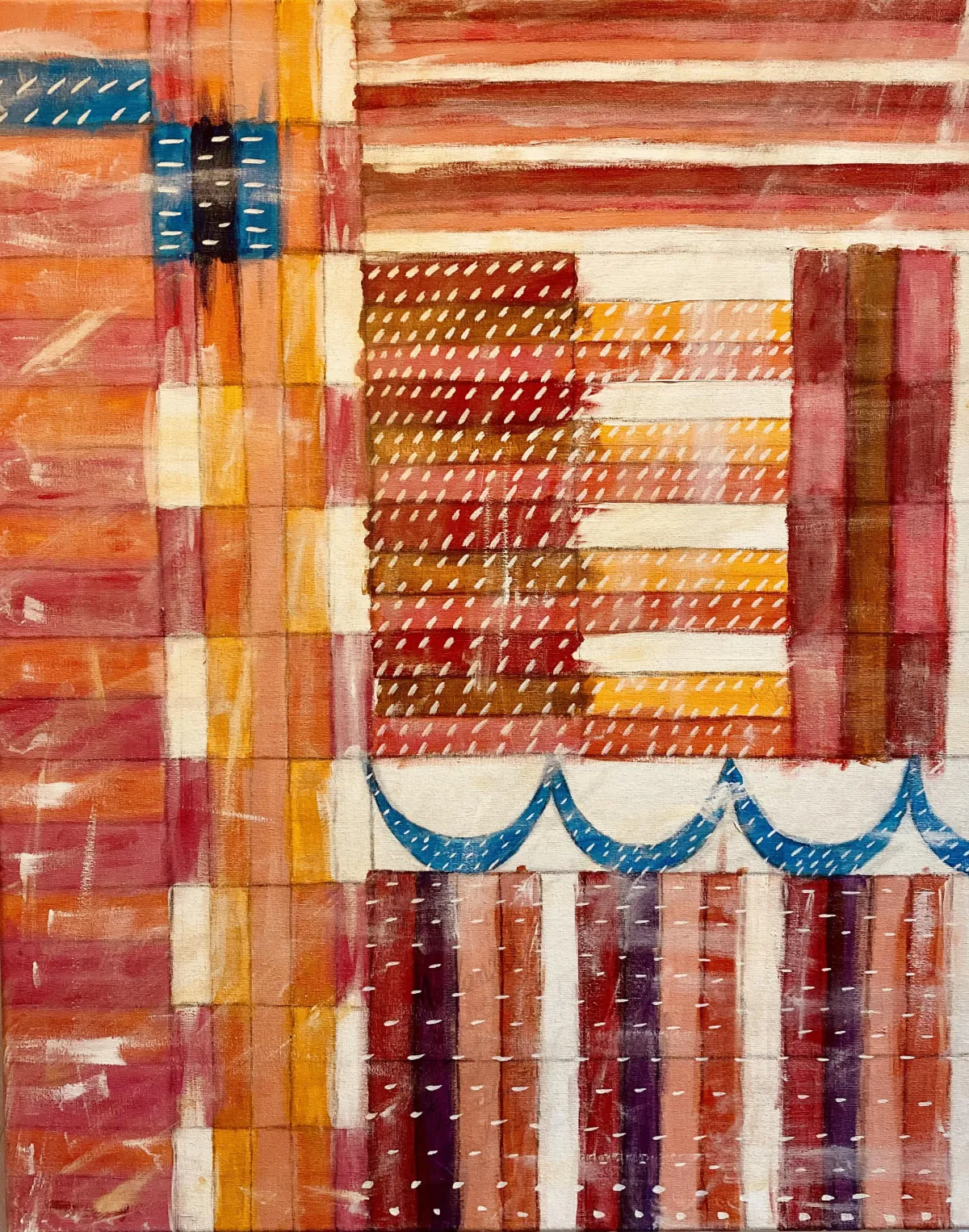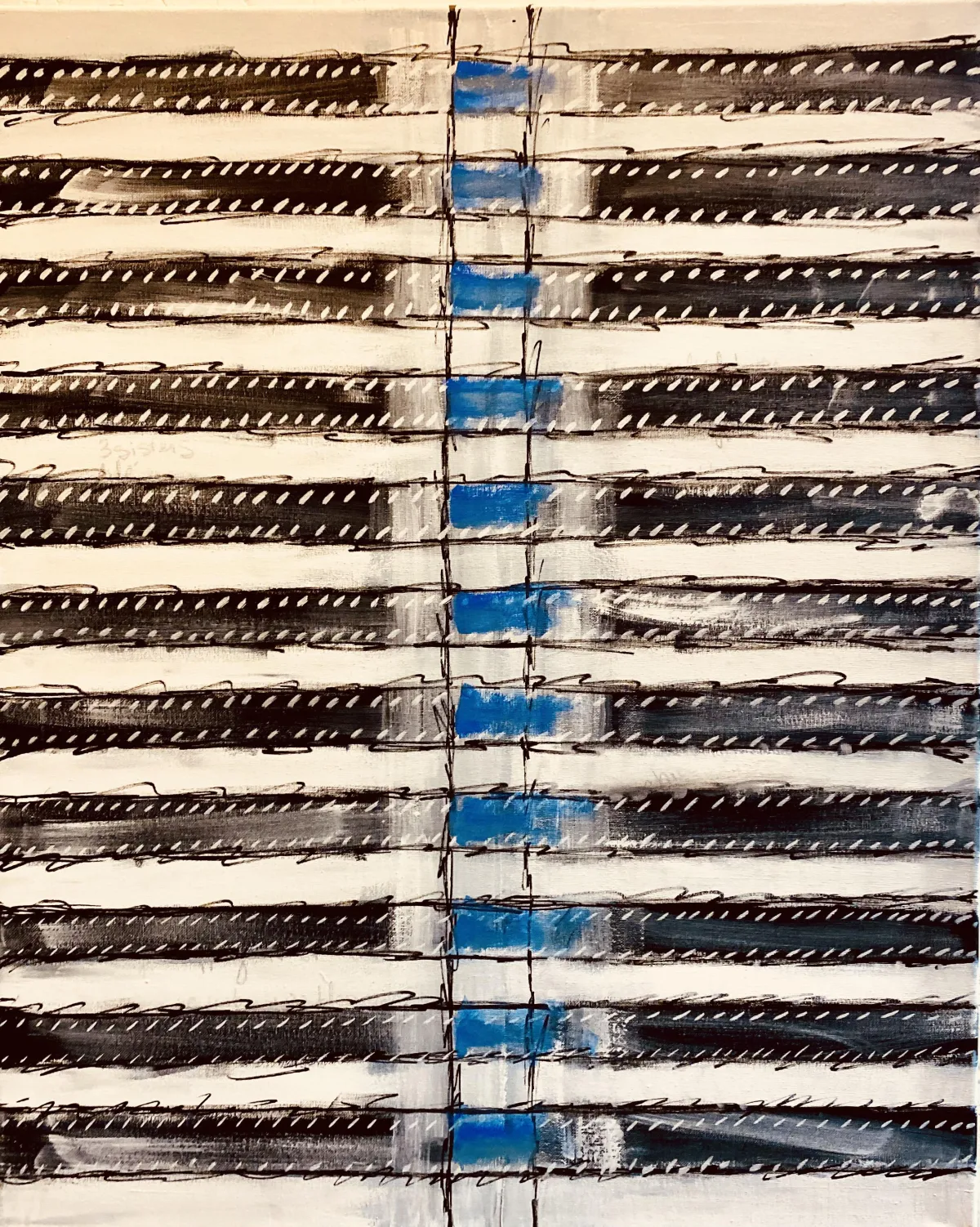Quilts
Artist Statement:
In this series I wanted to celebrate the unnecessary beauty of women’s traditional handiwork. I was struck by the sheer creativity expressed by so many women throughout history as they made the items they and their family needed with whatever means they had. They didn’t have to, but they so often made it beautiful. In my research on American quiltmaking, I learned that paper was often such a scarce resource that women would use whatever scraps they had to create their patterns, whether it was the back of an envelope, a receipt from the local Mercantile, or a letter. In fact, many of them sewed the scrap-paper patterns into the middle of the quilt as an extra layer of insulation. I began to imagine what scraps of paper each woman might have had on hand, and embedded these clues in each quilt painting to help tell the story of the fictional woman who made them. As I spent time on each canvas, a very clear story emerged, each wildly different from the other, as each imagined woman became very real to me. In a style that is undeniably linked to black futurism, I began to imagine a happier version of the past, an alternate timeline, perhaps, in which women in general had a more joyful story, and in which each of these women triumphed and thrived.

1. Matilda - the mother
36x46 $1,300

2. Maybelle - the farmer
24x30 $950

3. Emily- the preacher
24x24 $800

4. Delphine- the chef
24x30 $750
Quilts
Artist Statement:
In this series I wanted to celebrate the unnecessary beauty of women’s traditional handiwork. I was struck by the sheer creativity expressed by so many women throughout history as they made the items they and their family needed with whatever means they had. They didn’t have to, but they so often made it beautiful. In my research on American quiltmaking, I learned that paper was often such a scarce resource that women would use whatever scraps they had to create their patterns, whether it was the back of an envelope, a receipt from the local Mercantile, or a letter. In fact, many of them sewed the scrap-paper patterns into the middle of the quilt as an extra layer of insulation. I began to imagine what scraps of paper each woman might have had on hand, and embedded these clues in each quilt painting to help tell the story of the fictional woman who made them. As I spent time on each canvas, a very clear story emerged, each wildly different from the other, as each imagined woman became very real to me. In a style that is undeniably linked to black futurism, I began to imagine a happier version of the past, an alternate timeline, perhaps, in which women in general had a more joyful story, and in which each of these women triumphed and thrived.

1. Matilda - the mother
36x46 $1,300

2. Emily- the preacher
24x24 $800

3. Delphine- the chef
24x30 $750

